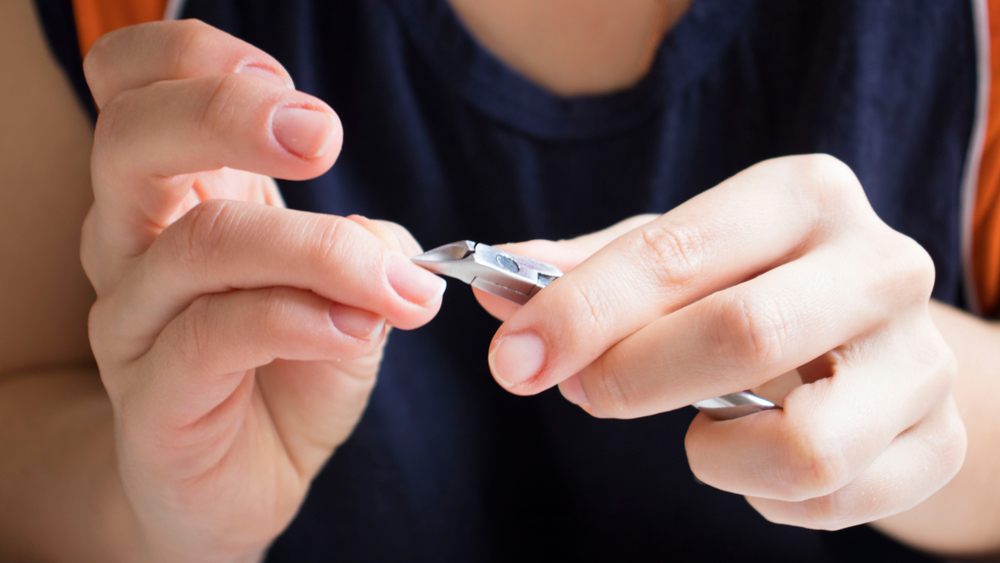Caution is required when removing cuticles. We reveal the best tips and tricks for healthy and well-groomed hands and feet.
The cuticle protects our nails and ensures that germs have no chance of damaging the sensitive nail bed. But dry, cracked and overgrown cuticles look unkempt and can lead to painful diseases. Here are the best tips and tricks on how to remove your cuticles and what you should consider when caring for your hands and feet.
Cuticle removal: Painful No Gos
- Hands off the nail scissors! Although it is tempting to cut off a disturbing piece of cuticle with the scissors, the risk of injury should not be underestimated. If you are overzealous, the cuticle will quickly tear. This is not only painful, but also the perfect breeding ground for an inflammation or nail fungus.
- Likewise, you should pull yourself together, chew off your cuticles or pull on them with your fingernails. This has nothing to do with a healthy manicure. Removing cuticles in this unprofessional way quickly leads to inflammation or fused cuticles that look extremely unkempt.
What tools do you need?
For beginners:
- Cuticle remover or nail oil
- Rosewood sticks to push back the cuticle
For advanced:
- Cuticle remover or nail oil
- Cuticle nippers or cuticle scissors, for cutting the cuticle
The preparations
To remove cuticles gently, some preparation is necessary.
- At the beginning you should treat yourself to a warm hand or foot bath. This not only softens the cuticles, but also has a very relaxing effect.
- In the next step the cuticle should be soaked. The smoother it is, the easier it can be removed. For this purpose, cuticle removers are suitable, which you can buy in any drugstore. The tincture is applied to the cuticle with a brush, similar to nail polish, and then left to take effect.
- Alternatively, a special oil is suitable for fingernails and cuticles. This also on the cuticles give and work until the skin around the nails has become beautifully soft.
- A hand bath with warm olive or jojoba oil can also help to soften the cuticles. To do this, simply place your fingers in the warmed oil for 10-15 minutes.
How to do it right
Now your cuticles are perfectly prepared to be removed gently and without risk.
- Rounded rosewood sticks are a well-tried home remedy to push back the cuticles. The wood is soft enough not to hurt the sensitive cuticle. Simply push the cuticles back carefully with the rosewood sticks.
- Advanced manicurists and pedicurists can use cuticle nippers or cuticle scissors instead. These are used in professional hand and foot care, but nowadays you can also get them easily in any pharmacy or drugstore. The cuticle nippers are much more delicate and gentle than conventional cuticle scissors and thus minimize the risk of injury when removing cuticles.
- If the cuticle has been pushed back or removed with cuticle pliers, intensive cuticle care is essential. Afterwards, it is best to massage some oil or a rich hand cream into the fingernails and the nail bed.
The right nail care
The key to healthy cuticles is the right care. It is important to supply the skin with sufficient moisture so that it remains smooth and supple.
- It is usually sufficient to regularly care for hands and feet with a moisturizing hand cream.
- In case of special stress on hands and feet or dry skin in winter, diligent application of cream is sometimes not sufficient to make cracked cuticles supple. Tip: Apply olive, jojoba or almond oil to the cuticles before going to bed, put on cotton gloves and let the caring ingredients work overnight.
- Those who frequently suffer from dry and chapped cuticles should treat themselves to intensive care and take care of manicure and pedicure on a regular basis. Drugstores and pharmacies offer special creams that contain moisturizing ingredients and usually also soothing components such as chamomile or almond oil to moisturize the skin and cuticles.

